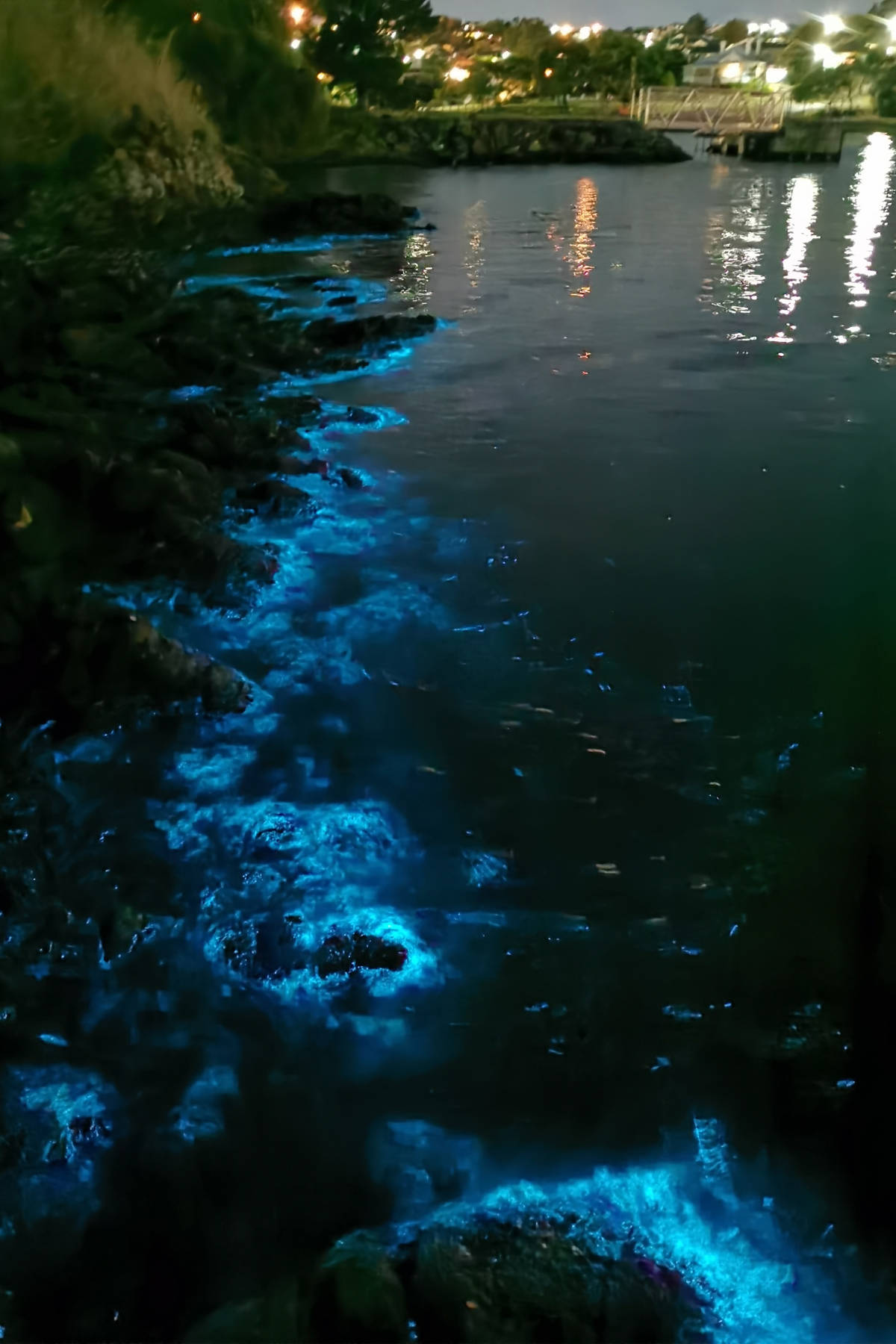
Bioluminescence in the River Derwent at Montagu Bay, April 2021.
Bioluminescence is a natural light phenomenon, created by the marine organism Noctiluca scintillans (a dinoflagellate) that can also produce a red tide. Many other marine species, e.g. fish and squid, also produce bioluminescence, while the phenomenon is much rarer on land.
The purpose of emitting light varies greatly: it can be for finding partners and luring or illuminating prey. It can also be used as a form of defence by warning, blinding or distracting a predator. With bioluminescence occurring in so many different types of organisms, scientists are still learning about the multitude of functions it serves.
The actual process of bioluminescence is a chemical reaction that requires oxygen and a light-emitting molecule called "luciferin" in conjunction with a catalysing enzyme. Bioluminescence is NOT the same as phosphorescence. In phosphorescence, external energy from a source of light is absorbed and re-emitted as a particle of light. In bioluminescence, the light-producing chemical reaction occurs inside the organism.
Noctiluca scintillans is considered a nuisance species, but is not regarded as harmful to humans, even though large blooms are best avoided for recreational swimming (because of skin irritation).
While we enjoy the now common spectacular light of bioluminescence, it is unfortunately a sign of our changing climate. A strengthening of the East Australian current is pushing warm water towards Tasmania. Our waters are now warm enough for Noctiluca to survive here all year round, and they are competing with zooplankton and larval fish for food.
Further information
- For extensive research, myth-busting, physiology, and details on the chemistry this comprehensive site by the University of California has numerous informative links, including some that are children-friendly.
- A Tasmanian news report about bioluminescence, the local photographers who chase it, and scientists who study it.
- A Tasmania Facebook group on bioluminescence.
- For more information about Noctiluca scintillans, see our page on red tide.
